

Fulcrum
Macro Advisors



Macro Advisors
Francis J. Kelly
Founder & Managing Partner
Fulcrum Macro Advisors LLC and Senior Political Strategist for DWS
The opinions and forecasts expressed are those of Frank Kelly and may not come to pass. DWS and Fulcrum Macro Advisor are not affiliated. The brand DWS represents DWS Group GmbH & Co. KGaA and any of its subsidiaries such as DWS Distributors, Inc., which offers investment products, or DWS Investment Management Americas, Inc. and RREEF America L.L.C., which offer advisory services. 102596-3 (2/25)

Frank Kelly Founder & Managing Partner Fulcrum Macro Advisors

Chicago, Illinois
April 3, 2025
The Geopolitical Outlook 2025: Market Forces and Demographics Are Forcing A Massive Restructuring of the World Order and Are Causing Major Changes in the US


• The Complete Re-Wiring of Globalization - Trade tensions between China and the US/EU/Indo Pacific triggered a strong embrace of Industrial Policy among free market nations for the sake of “national economic security” (e.g., CHIPS Act in the US and EU, competition for critical mineral assets, etc.).
• Demographics are changing everything - India is now the largest population in the world. China, Russia, South Korea, Japan are rapidly shrinking and there is little they can do in the short to medium term to change that other than allow a massive influx of immigrants.
• The New Axis of Evil Arrived And Trump Wants to Break It Up or At Least Defang It – Russia’s invasion of Ukraine was the tipping point. Now Iran, North Korea, Venezuela, Cuba, and to some degree China are aligned in supporting each other militarily and economically. But what does Trump want and how will he handle?
• Commodities Are A Driving Force in Geopolitical Shifts
– We are in something of a new age where the global and regional battle for access to commodities
especially critical


A Shrinking World: Where Will The US, China, Russia, India, And The European Union Population Be In 2050 And 20100?

Russia and China Have a Serious and Unfixable Population Crisis
We would also note Africa (in total) has a current population of 1.4 billion and expected to reach 2.5 billion by 2050 and 2.6 billion by 2100.
The Percentage of the Population Aged 65 Years or Over



• The 20th Chinese Communist Party Congress in 2022 granted President Xi Jinping an unprecedented third term. In his acceptance speech, Xi’s focus was “Security.” He said the word 96 times.– But he was talking as much about internal security as external security.
• The Taiwan Invasion Risk: Worrisome but not likely in the next three-to-five years. US assessment: An invasion would be Xi’s “last, worst choice.”
• A major casualty of Xi’s policies is the impact on the regional and global markets investing in China: Foreign Direct Investment has nosedived. And there is less transparency overall, especially of key economic data. This has been the trend under Xi for the last 12 years and is continuing. Add to that Chinese exports to the West are decreasing.
• Watch the youth unemployment rate: Officially, it is at 15.7%. The real number is likely between 30-40%.


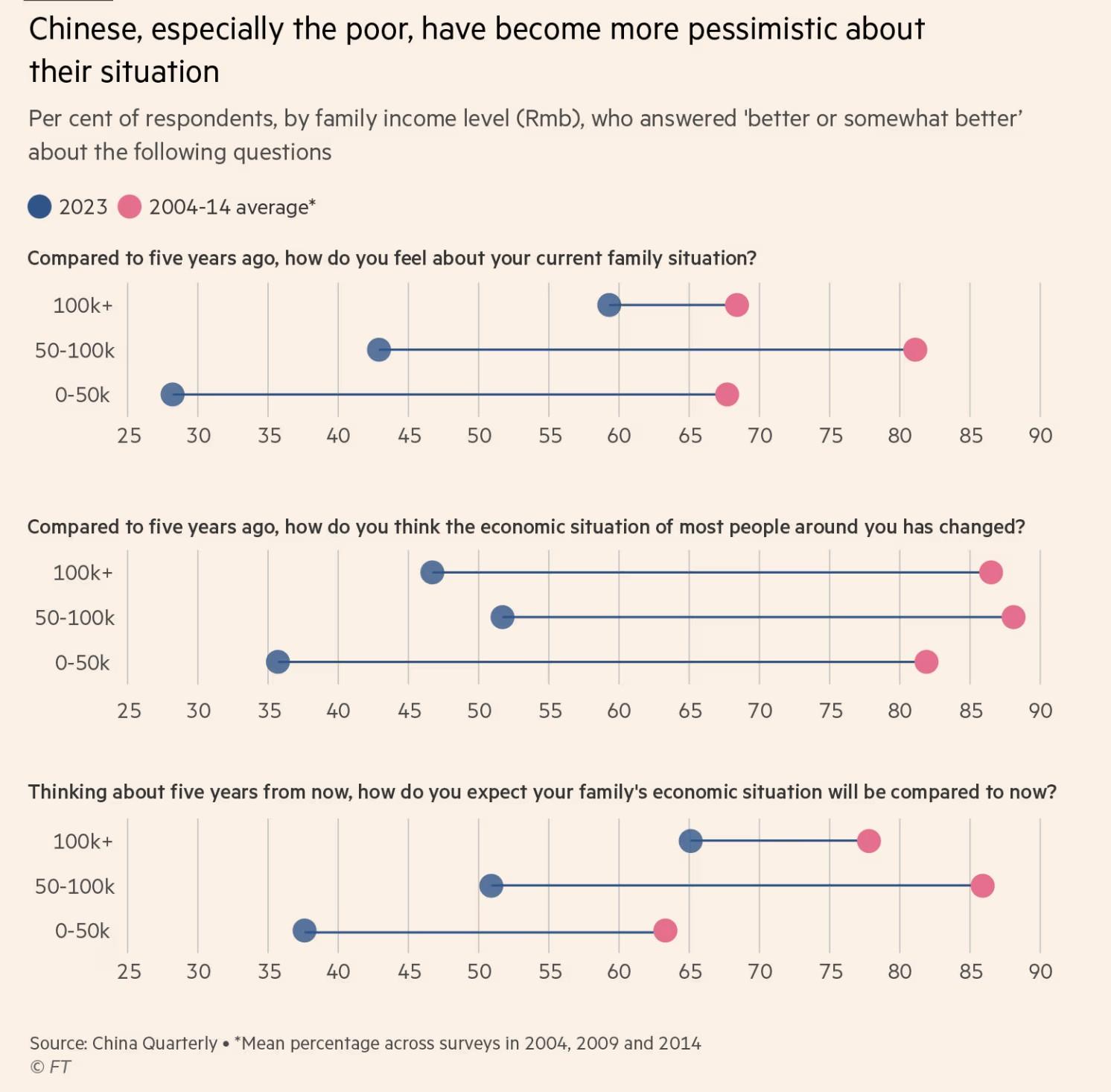

Population

• By 2100, China’s population will likely be less than half of what it is today.
• By order of comparison, by 2100 India is expected to have a population of 1.5 billion. China will be the 3rd largest country, following Nigeria which is expected to have 791 million people. The US is expected to have a population of 370 million.
• China’s Standing Committee just raised the retirement age from 60 to 63 for men and 55 to 58 for women over next 15 years to “expand” the workforce.
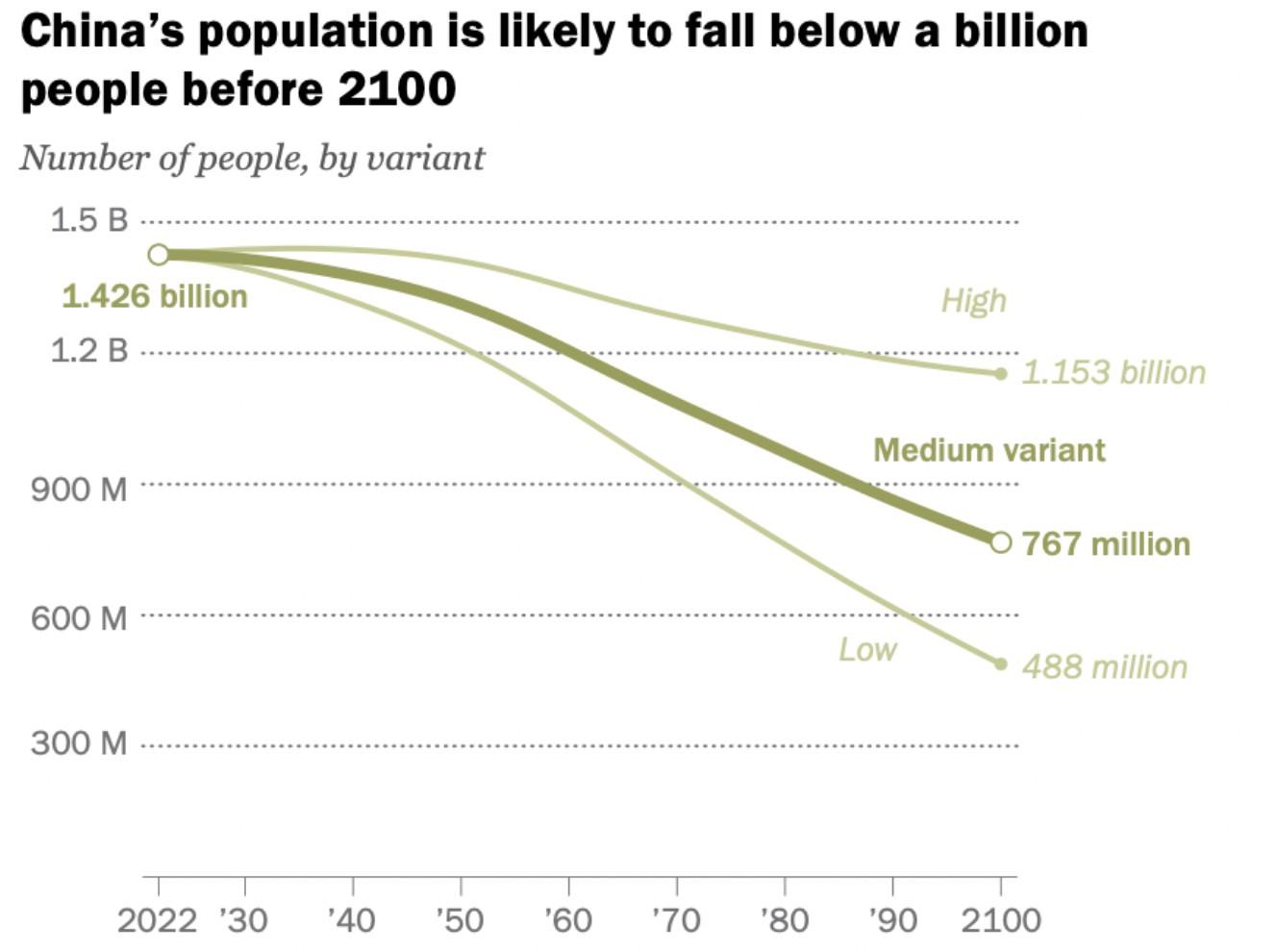
• The Standing Committee also recently outlawed the adoption of Chinese orphans by
Sources: United Nations, Gallup, Business Insider Africa, Financial Times
• India is expected to be the fastest growing economy in 2025, with estimates at 6.4 percent. Its population is now larger than China’s, with the average age being 33 years old.
• We are seeing a continuous outflow of manufacturing from China with a substantial amount of it moving to India. The reasons for going to India?
Low labor costs coupled with massive government infrastructure spending and subsidies
Excellent Education System
Rule of Law and we are not Communists…
• India’s growing relationship with the US being driven personally by Prime Minister Narendra Modi. He has built strong relations with President Trump in his first term and have already spoken twice in the first two weeks of the second term. Modi is scheduled to visit in February.
• Modi is also building key Indo-Pacific allies (Japan, South Korea, Australia, Philippines) economically and militarily to counter China.
• The Quadrilateral Security Dialogue (Quad) is potentially the groundwork for a future mutual security/trade alliance between India, Australia, Japan, and the US.

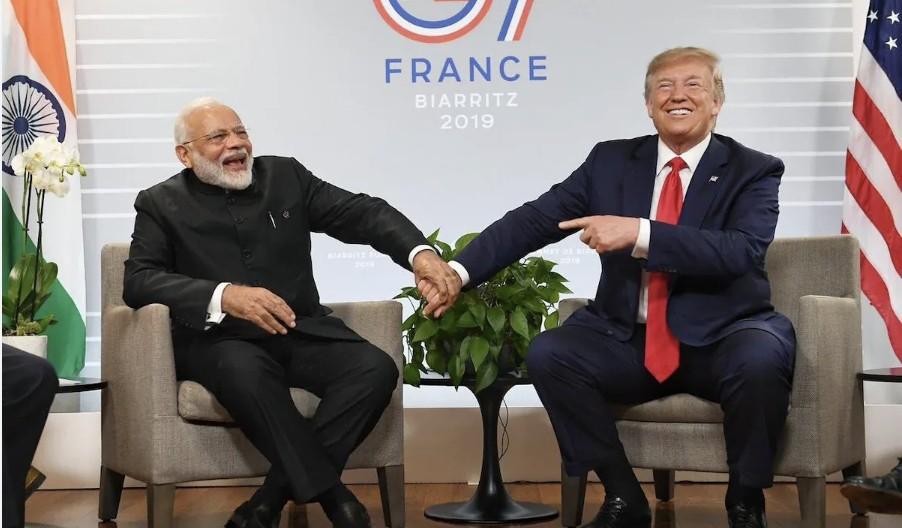

Sources: Reuters, Indian Ministry of Statistics
• After three years waging war on Ukraine, the Russian economy –and Moscow’s ability to fund the war – are running into trouble Sanctions – which continue to be tightened – are having an impact.
• The ruble is now at its lowest level against the dollar since 2022, spurred on by new US sanctions on Gazprombank, the last major unsanctioned bank Russia uses to pay solider and process trade sanctions.
• The lack of spare capacity in the labor market has brough unemployment – officially – to 2.4 %, forcing Russian businesses to aggressively recruit teenagers and retirees into the workforce.
• Annual inflation is now at 8% (but the real figure is believed to be double this figure). Russian companies are expected to raise prices on goods by more than 10% in December.
• The Russian Central Bank has been forced to raise interest rates to 21 percent with market consensus thinking it will go as high as 23 percent in the coming months as reserves become exhausted.
• Russia needs to find a way out of the Ukraine War or risk serious economic consequences.


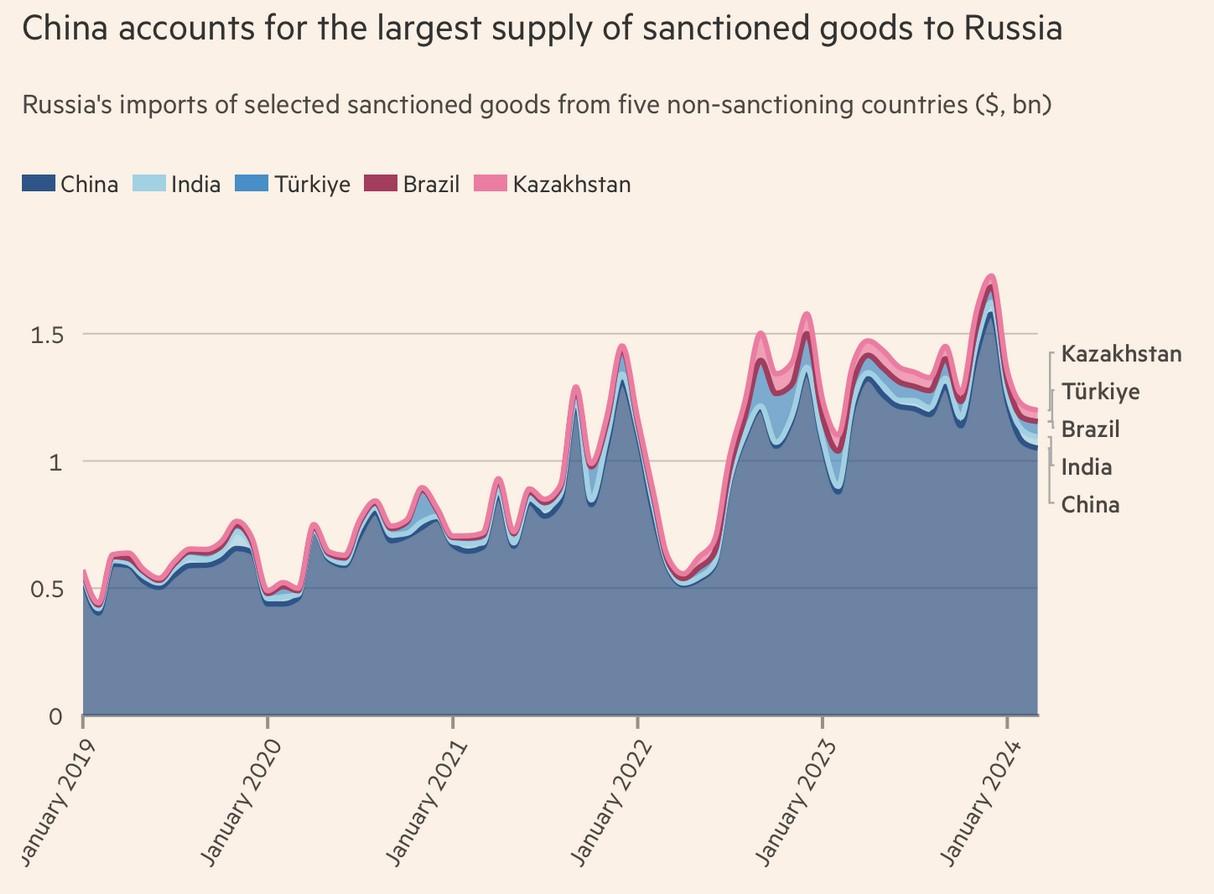
Sources: Reuters, The Economist, Wall Street Journal, IMF

• Over the past 16 months, Russia has ramped up asymmetric warfare against the West – mostly aimed at Europe and NATO member states.
• Alarmingly, China has been directly implicated in a number of these actions – mostly in cutting undersea communications cables via “civilian” freighters.
• Other acts include significant increases in cyberattacks on civilian and government sites and electrical systems. The cyberattacks are coming from not only Russian hackers but Chinese, Iranian, and North Korean hackers.
• The worst was the attempted assassination of the CEO of Germany’s largest weapons manufacturing company this past summer.
• For the most part, NATO and western governments have tried to downplay these actions but the more desperate Russia gets over Ukraine – and as President Trump increases pressure on Russian President Putin to come to the negotiating table – we should expect more such activity.







• Hamas’ horrible attack on Israel in October 2023 – sanctioned by Iran – has resulted in a fundamental shift in the Middle East’s power structure, leaving Iran badly vulnerable in ways it has not experienced since the Revolution that toppled the Shah in the 1970s.
Hamas has now been essentially destroyed as a fighting force. Moreover, Iran’s proxy force, Hezbollah, has been so severely degraded that Iran has essentially lost control of southern Lebanon – a critical gateway to the Mediterranean for Iranian trade. This in turn emboldened Syrian rebels to launch a lightning strike on the Syrian Army that toppled the Assad Regime – an Iranian proxy – after after 13 years of Civil War.
As soon as Assad fled, Israeli military forces moved immediately on Iranian forces and their proxy militias in Syria, destroying more than 90 percent of their military capability and effectively clearing a direct path for the Israeli Air Force to strike Iran and its nuclear facilities.
Iran is now floating the idea of holding direct talks with the Trump Administration over their nuclear program in a bid to stave off an Israeli attack which could in turn lead to massive


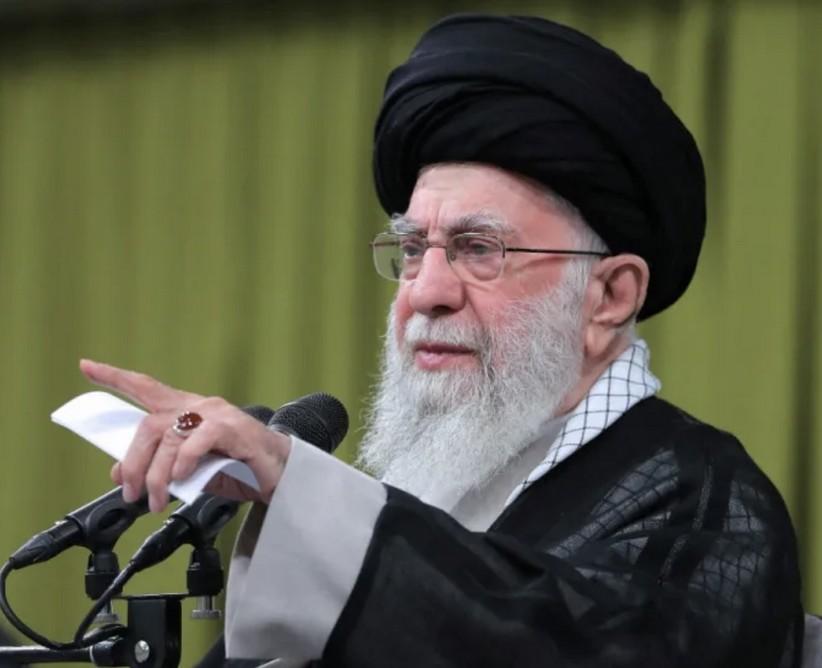
Source: BBC, Congressional Research Service; the Times of Israel
• Russia’s invasion of Ukraine was launched its invasion of Ukraine on February 24, 2022. Western nations have pledged more than $380 billion in total aid to Ukraine since then.
• While European countries have pledged the most money total (military, financial, and humanitarian), the US by far has provided the most military aid.
• Since then, the US – with a population of 340 million people - has given more than $175 billion in aid to Ukraine – of which $70 billion has been direct military aid
• The European Union – which consists of 27 nations with a population of 450 million people – has contributed $145 billion in aid of which $49 billion in military aid (weapons).
• Why the disparity? Why is the US giving so much and the EU NATO members giving so little even after 3 years of war?


Source: Keil Institute, Deutsche Bank
• By comparison to the EU NATO members, the US gives 3.4% GDP to NATO. Canada gives 1.37% and says they cannot reach 2% requirement until 2030.
• Meanwhile, Russia defense spending soared 42% in 2024 ($462 billion) and outstrips all of Europe’s defense budgets combined ($457 billion).


NOTE: President Trump now wants NATO members to move to 4% of GDP. A number of Eastern European nations are highly supportive – and even suggested 5% be the target.
Source: NATO, Financial Times
EU Trade with Kyrgyzstan Has Exploded Over the Last 3 Years
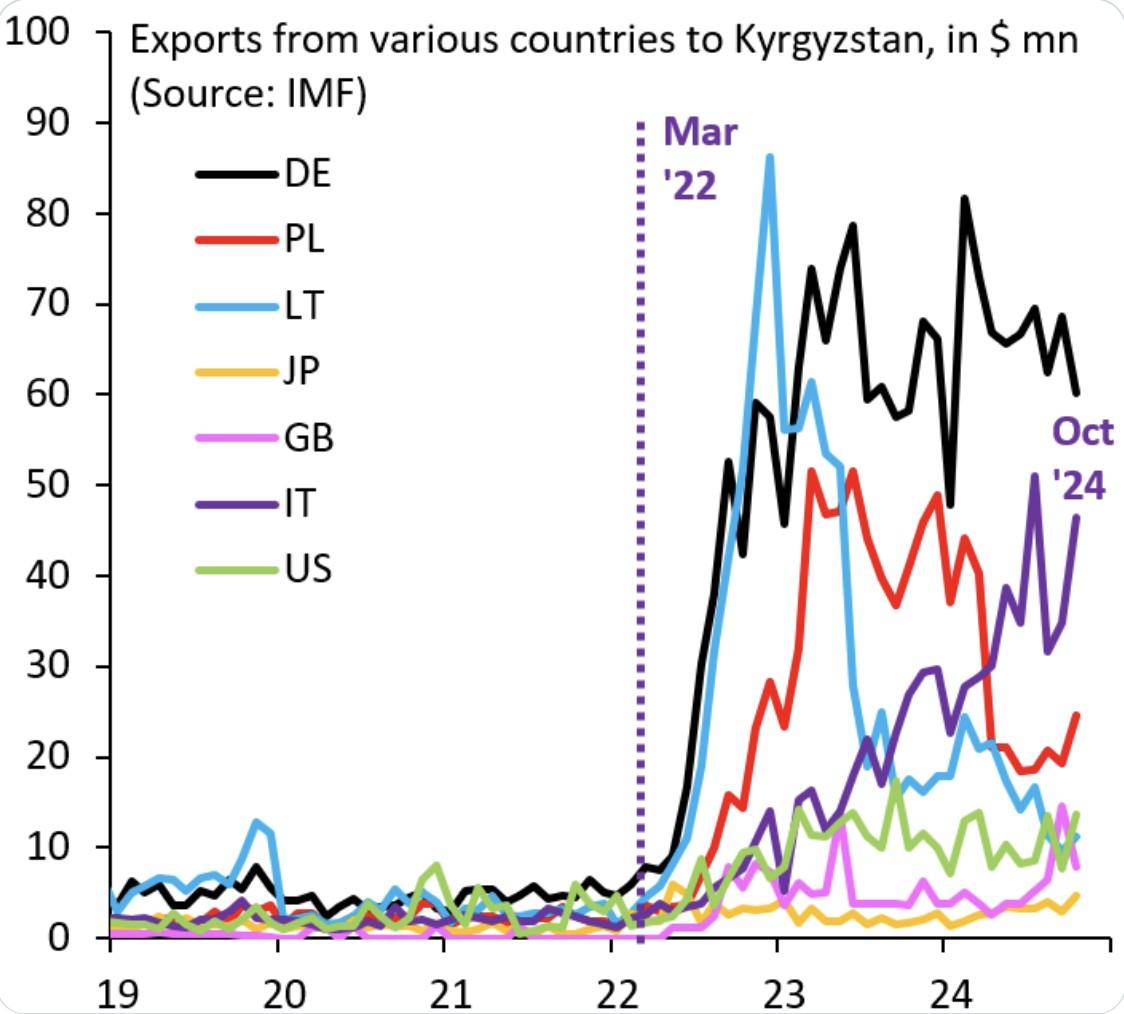

Trading Via The ‘Stans and Turkey

Source: Robin Brooks/Brookings Institution, US Government
The Trump Economy: The MashUp of Taxes, Budget, Deficit, Tariffs and Foreign Policy
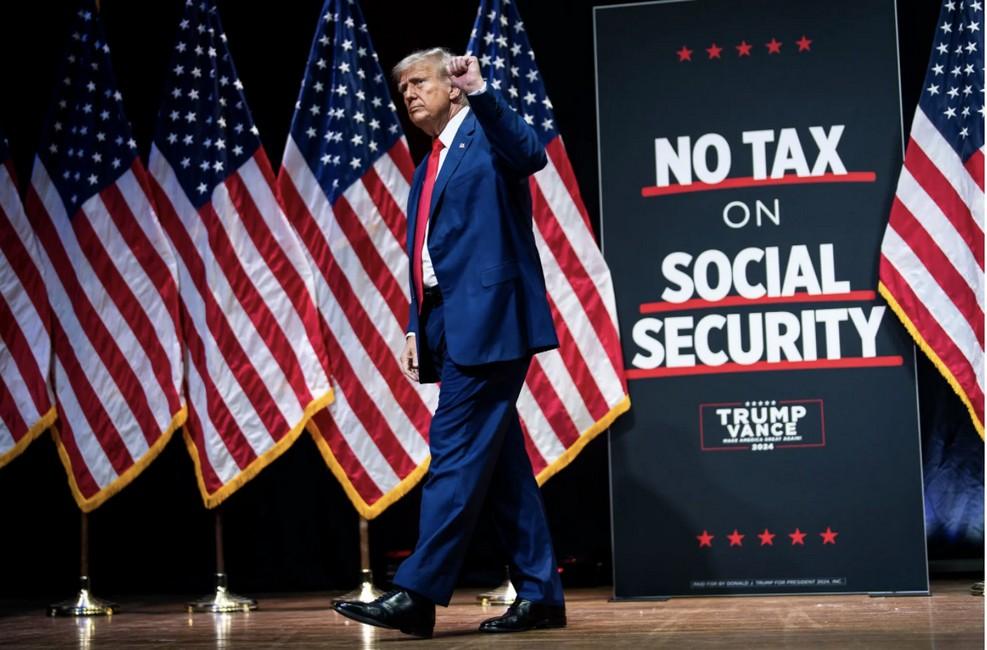



President Trump 2.0 4.0: Moving At Warp Speed Because He’s Only Got 18 Months

• President Trump has the benefit of having the last four years to reflect on what worked and what did not in his first term. He also spent the last four years studying government, what worked and what did not. We would argue this means this is not a simple follow-on to his first term – the President is a very different political leader now, seasoned, focused, and smarter on the ways of Washington. Hence, we would argue it is more “Trump 4.0”.
• The President has emphasized to his team that he really has 18 months to get “Big Ticket” issues done, not four years. Why? In 2026, two event happen which will change the political dynamic considerably:
The 2026 Midterm Elections – The White House has to calculate the risk of Republicans losing control of the House where they have one of the slimmest majorities in US history.
The 2028 Presidential Elections – With Trump being a lame-duck, American voters (and especially Congress) naturally will begin looking at the 2028 elections.




Congress is highly likely to need another Continuing Resolution to keep the government running. And that will not be easy to get done in the House.

• House and Senate Republican leaders are battling with each other on the basic legislative ”architecture” to move President Trump’s tax, budget, defense, and homeland security agenda.
• Reconciliation is the Way: The one thing they agree on is they will utilize the “Reconciliation” method: Congress can only use Reconciliation two times in a two-year period. It cannot be filibustered in the Senate. And it can only cover issues of budget, tax, or deficit management. President Trump has made it it clear he wants the House version: “One Big Beautiful Bill.”
• But Here is the Split: Senate Republicans want to see the DOGE effort play out to maximize money that can be cut and go to tax cuts. They also are quietly concerned about blowing out the deficit and economic conditions – especially sticky inflation. And they also see how hard it is for House Republicans to agree on anything – SALT, Carried Interest, deficit reduction targets, etc. – and with a three-seat majority, House Republicans can and will take turns holding the bill hostage.


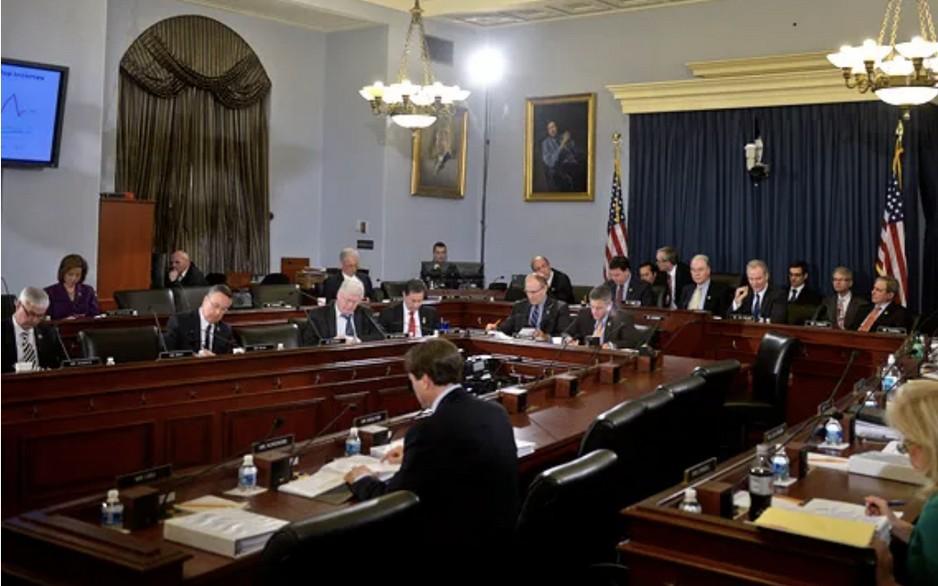
• Republican Congressional leadership is wrestling among themselves as to how to pass a renewal of President Trump’s Tax Cuts and Jobs Act of 2017 – Do they wrap it into a giant Reconciliation bill that includes the 2025 budget, a suspension of the debt ceiling for four years, immigration-related legislation? Or do they go with two Reconciliation bills to make the process cleaner and easier?
• But what is on the table to be included in the bill? There are a lot of new ideas being floated, including: What Provisions Are in Play? Exempt Overtime Pay Raising Cap on State and Local Taxes (SALT) Repeal Green Energy Tax Credits Child Tax Credit increased to $5,000

• In the current House Reconciliation bill which seeks to cut $1.5 trillion over the next decade, Republicans are looking to change how much the federal government (as opposed to states) contribute to Medicaid expenditures via the Federal Medical Assistance Percentage (FMAP).
• The $880 billion program covers more than 80 million lowincome people, and the federal government pays between 50 – 75 percent of the tab (the rest covered by states).
• House Republicans are looking at work requirements forcing Medicaid beneficiaries to log work, volunteer or education hours to qualify. Opponents say this could lead to 1.9 million people losing Medicaid. Much depends on the fine print of the legislation according the Congressional Budget Office.
• Republicans might also reduce the rate at which the federal government matches states’ Medicaid spending – a move that could yield $530 billion in savings over the coming decade.
• There are other significant options they are considering. One thing to consider is how this impacts hospital operators that get significant revenue through Medicaid.


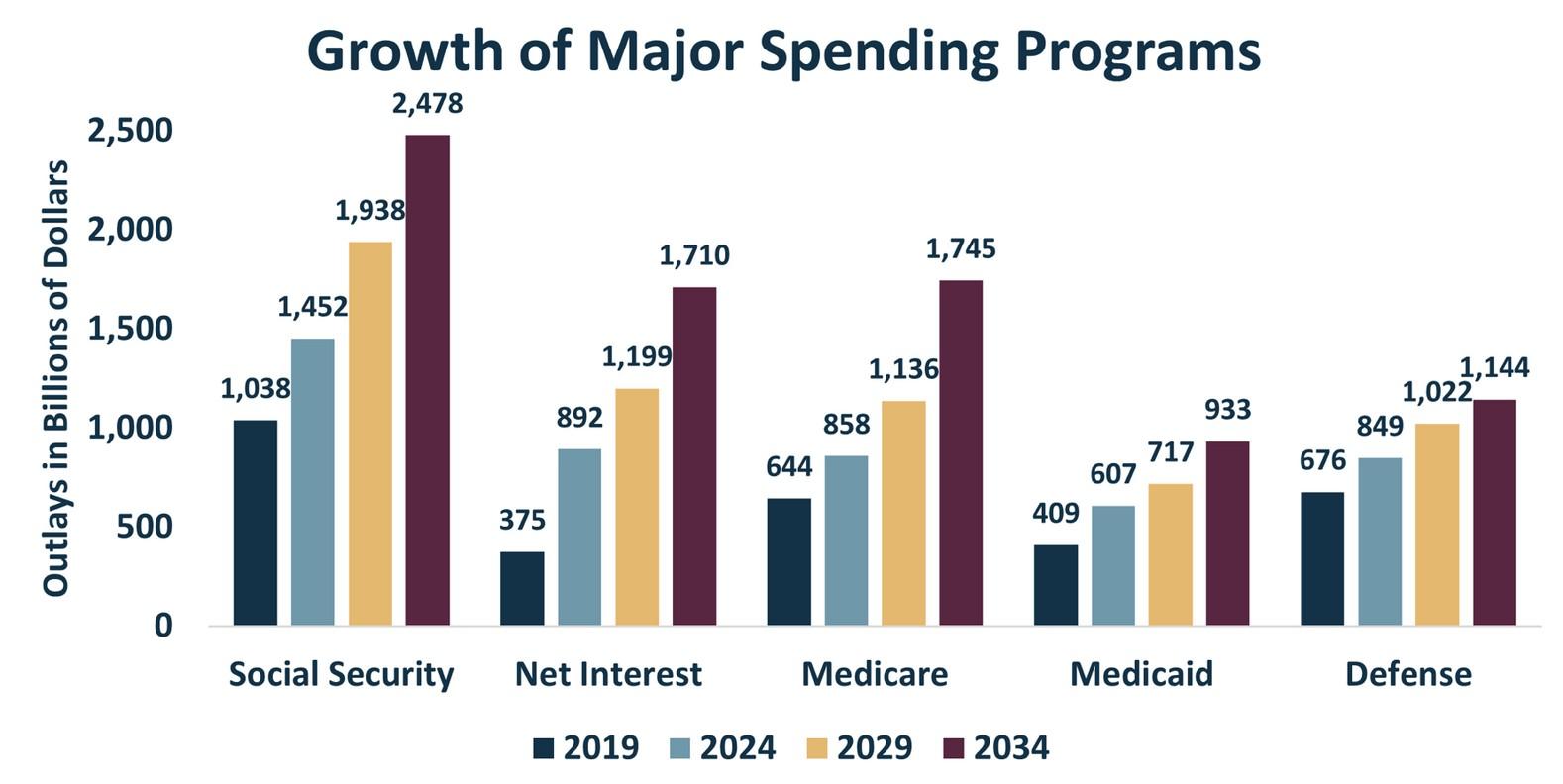

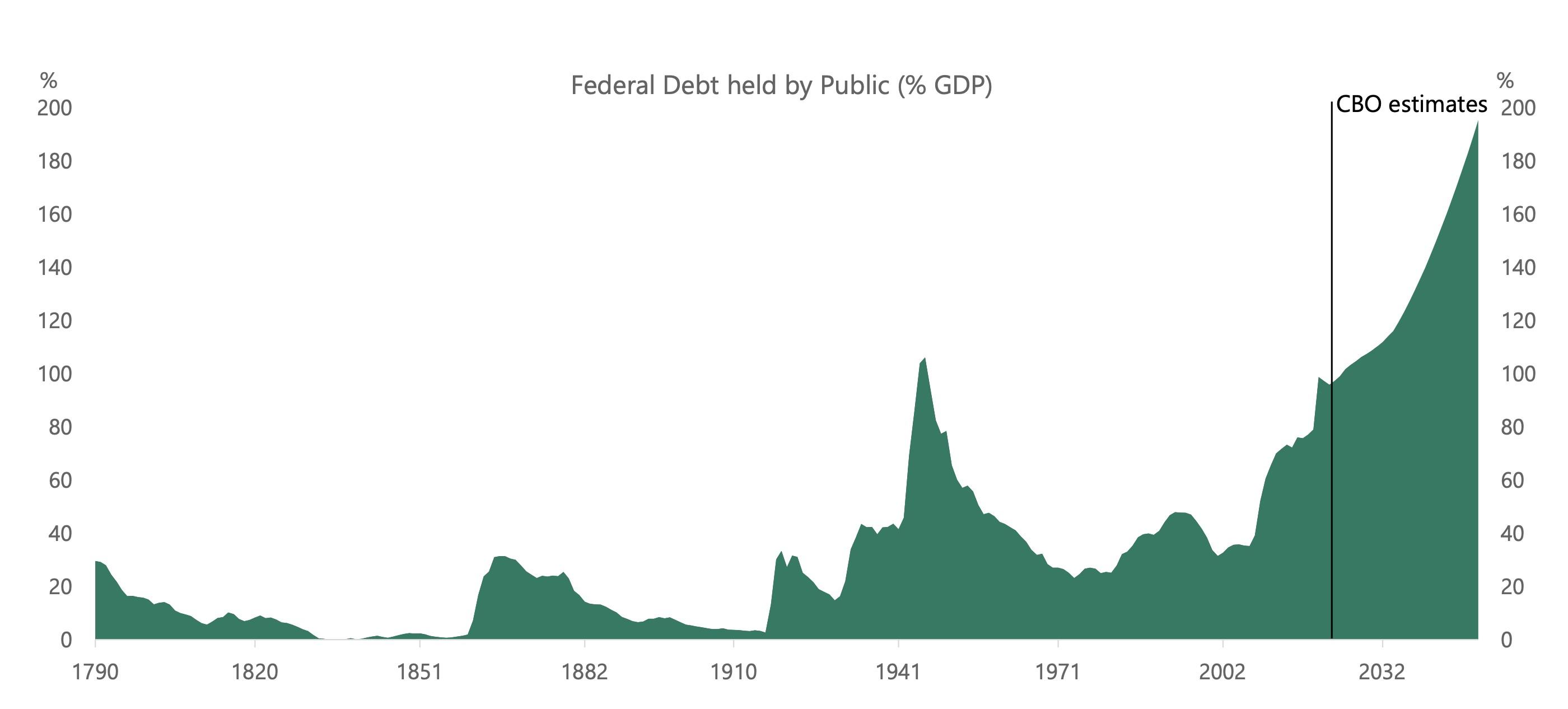
Source: Apollo Capital Management Chief Economist Torsten Slok, CBO, Haver Analytics
• President Trump sees tariffs as the ultimate foreign policy negotiating tool, as we have seen with his recent threat to Canada, Mexico, and China over illegal immigration and fentanyl smuggling – a homeland security issue and a health issue, not the traditional economic/trade issues for which tariffs are used.
• What to watch for: Trump wants a “Grand Bargain” with China. While still being formulated, Trump essentially is willing to deal on tariffs on China in return for Beijing helping find a deal on Ukraine, convincing Iran not to build nuclear weapons, and deal with North Korean threats to the region. Additionally, Trump sees the expansion of US oil and gas production as an incentive –look for Trump to urge China to buy US oil/gas as part of the deal.
• But there is an active debate inside the Trump Administration over which countries tariffs be applied to and at what rate. Treasury Secretary Scott Bessent wanted to start at 2.5%. Trade Advisor Peter Navarro is pushing an across-the-board 40% tariff on all countries. But we are going with “Reciprocal tariffs” instead.

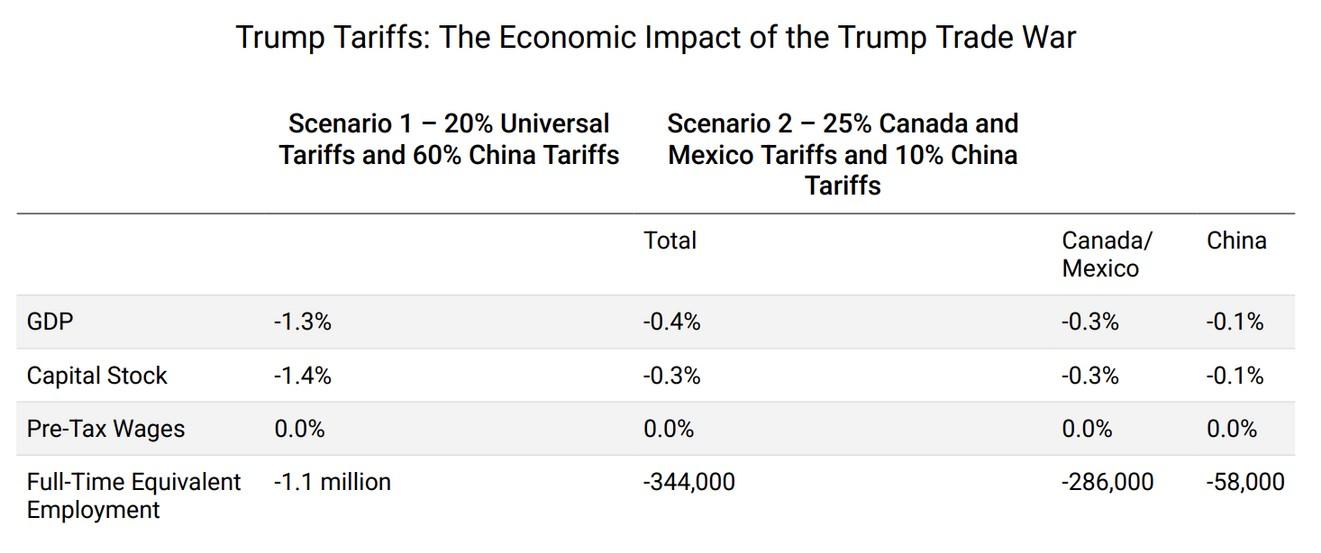
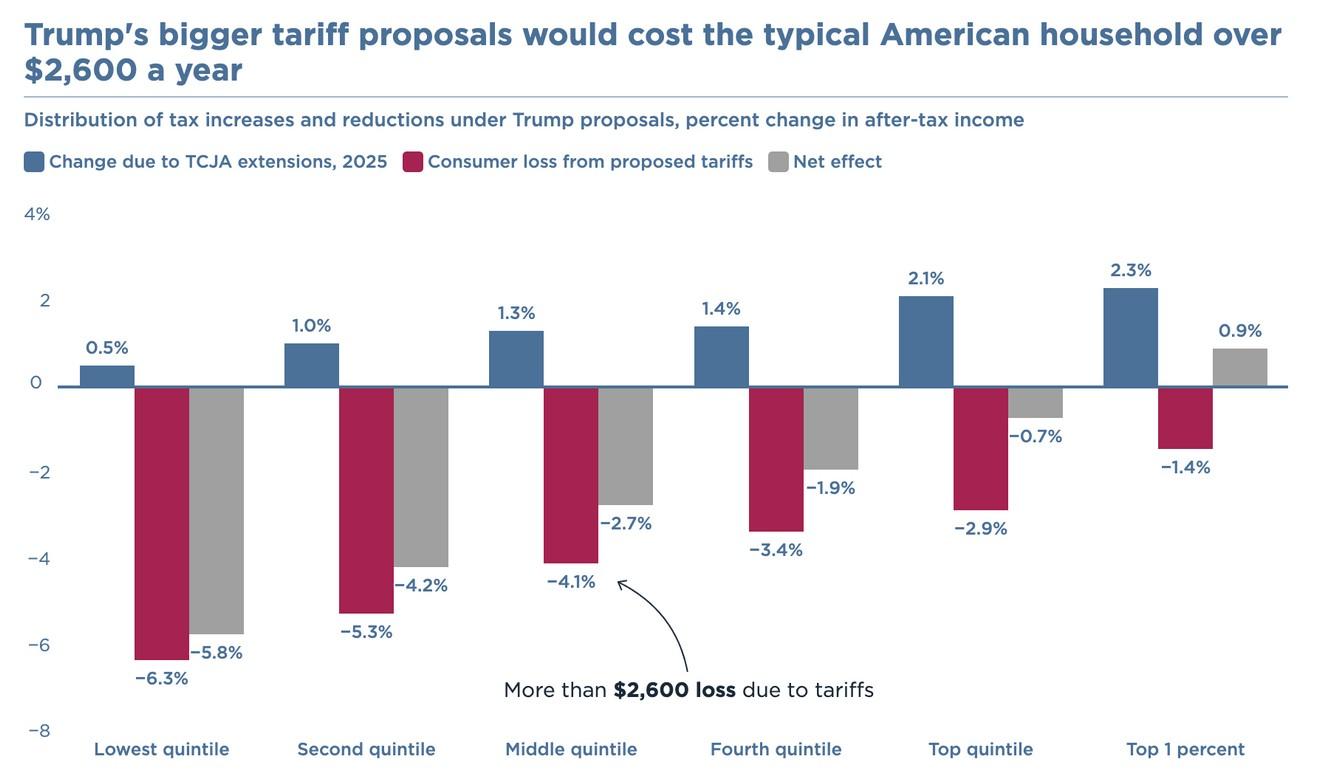
85 percent of the federal workplace lives and works outside of Washington, D.C.

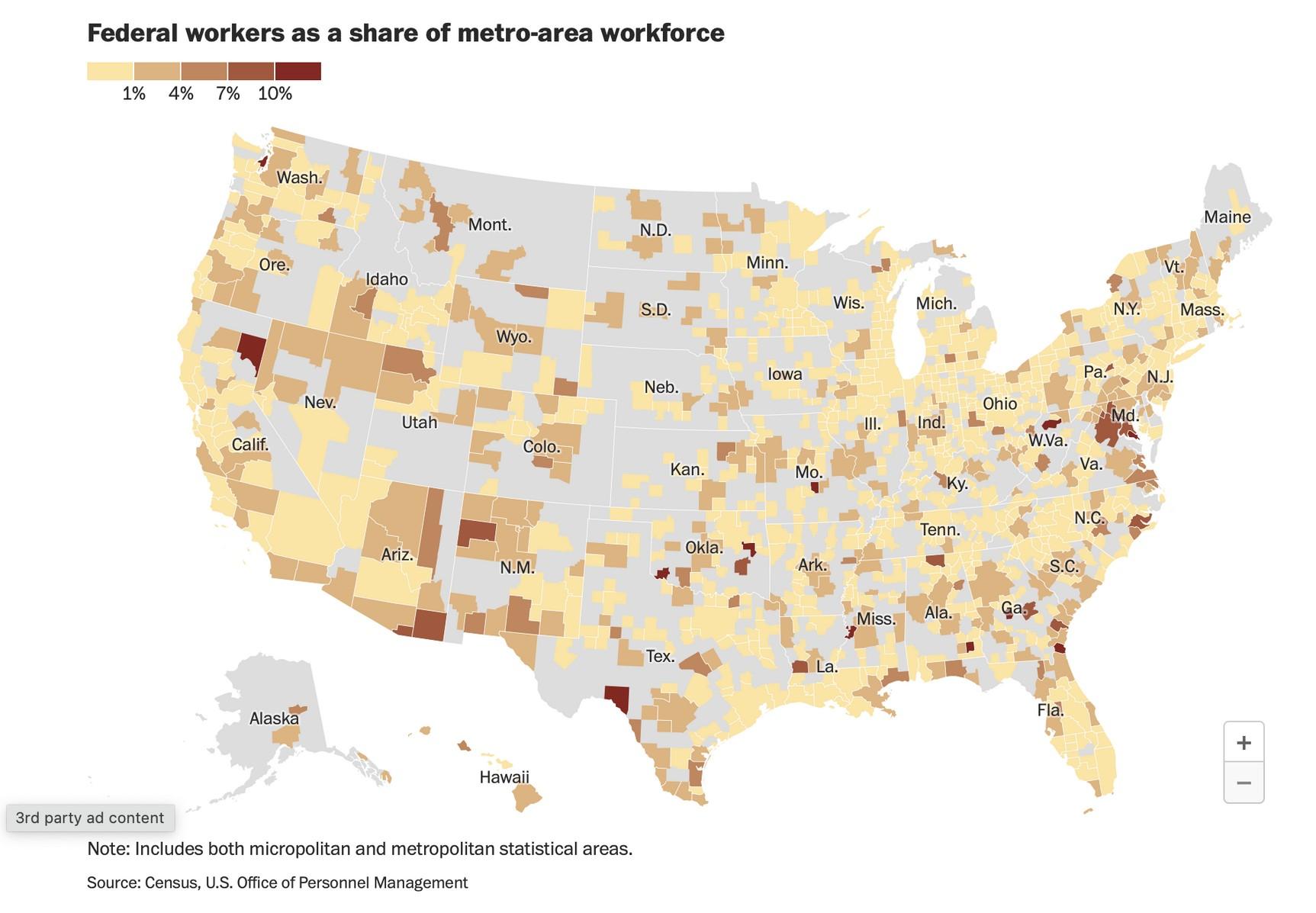


0.9 percent of them are in the Austin area.
Source: Washington Post

For the first time in 60 years, US energy production is now higher than US energy consumption.
Source: Apollo Management, US Energy Information Agency

And Who Will Be Fed Chair in 2026?

• President Trump is highly likely to continue putting considerable verbal pressure on the Fed to cut rates. But, as Trump has made clear, he is not going to move to try and fire Powell.
• The House Financial Services Committee has just formed A Federal Reserve “Working Group” to look at the Fed’s dual mandate, their impact on the Treasury market, and their regulatory and bank supervision activities.
• Jay Powell’s term as Chair ends May 15, 2026. Former President Trump has made clear he will not re-nominate Powell and has said his shortlist includes economist Art Laufer, National Economic Council Director Kevin Hassett, and former Fed Governor Kevin Warsh.
• What does that mean between now and then? We believe Powell will be ready to leave by 2026, having guided rates downs without causing pain to the economy. His “invisible earmuffs” are on and the risk of politicization of Fed policy is non-existent.
• Only one other Fed Governor’s seat opens up in 2026: Fed Governor Adriana Kugler’s term ends on January 31, 2026.
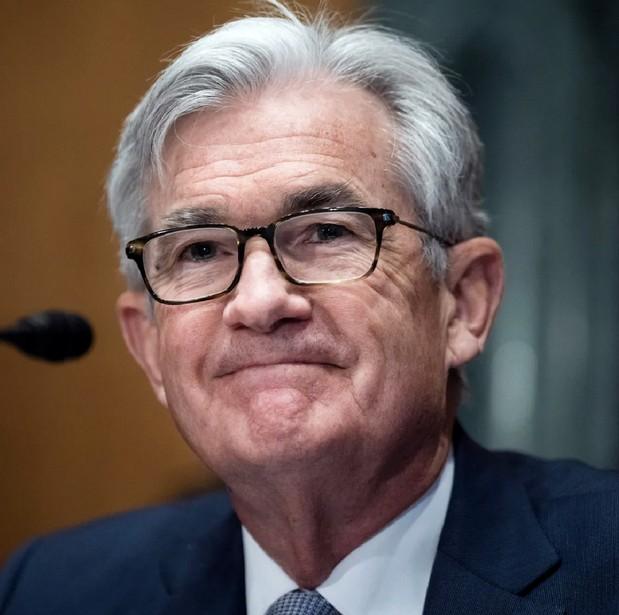



Source: Bloomberg


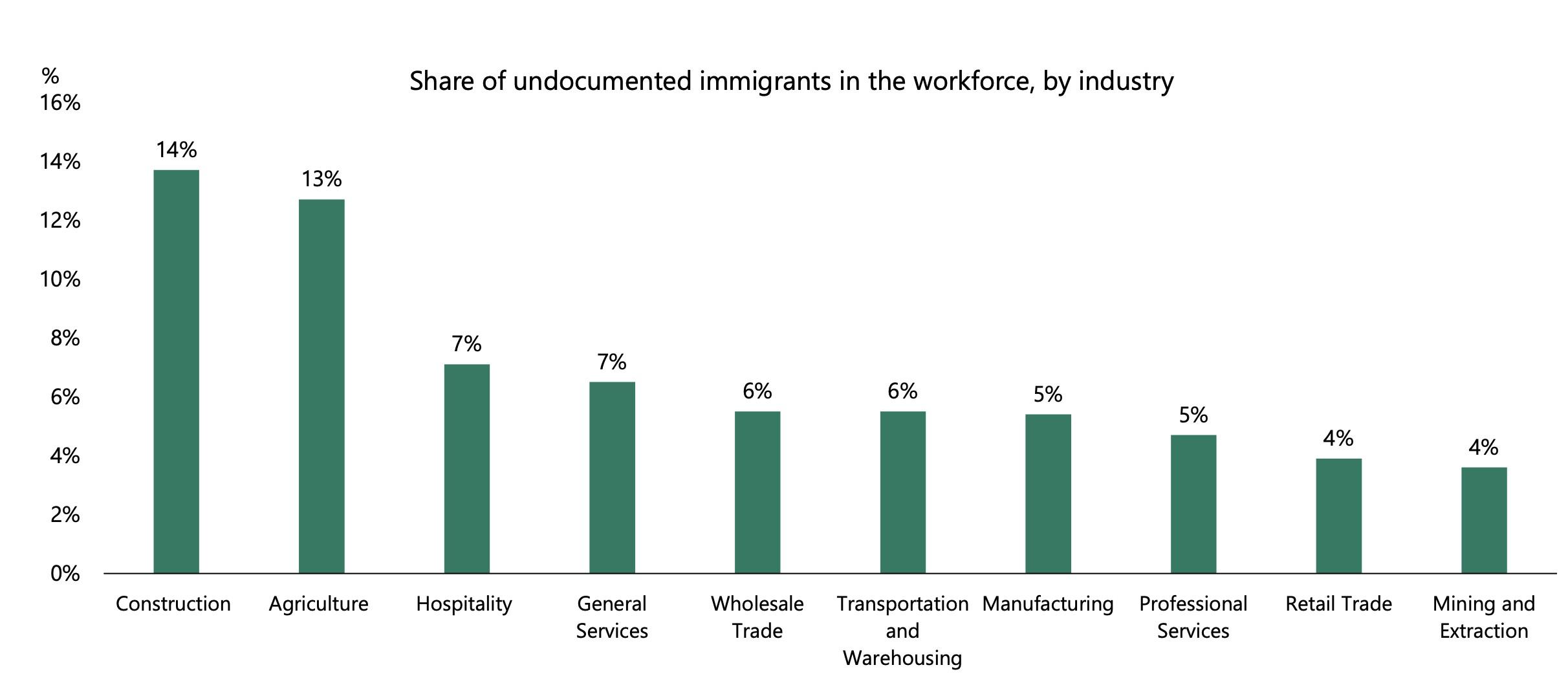
Source; Apollo Management

• Semiconductor production in the US is the one area where bipartisanship presides in Washington all in the name of “national economic security.”
• Congress took up this challenge in 2022 by passing the CHIPS Act which grants close to $100 billion in federal funding on building up the chip industry. Three examples:
Intel broke ground on a new $20 billion facility in Columbus, Ohio and $20 billion plant in Arizona.
Micron broke ground on a $15 billion expansion in Boise, Idaho and announced a new $100 billion buildout over 20 years in New York – the largest in the world.
Samsung was just awarded more than $6 billion to build new semiconductor facilities in Austin, Texas.
• Combine this with the $550 billion funding from the Infrastructure bill also passed in 2022, and it is a potential boom for numerous sectors, particularly for commercial real estate, residential real estate, etc.

• Secretary of Commerce Designate Howard Lutnick: The CHIPS Act was an “Excellent down payment.”
Source: Semiconductor Industry Association

Source: Peterson Institute for International Economics , Commerce Department




In 2024, the Supreme Court passed down the highlycontentious Chevron Decision. The ruling will likely have a sizeable impact on existing federal regulation of all sorts going forward and likely lead to the repealing of a number of federal regulations.
• The Federal Reserve, the SEC, CFTC, OCC, CFTC, NCUA, and other financial regulators (as well as every non-financial regulator like FERC, FDA, etc.) are bracing for a slew of federal lawsuits challenging existing regulations.
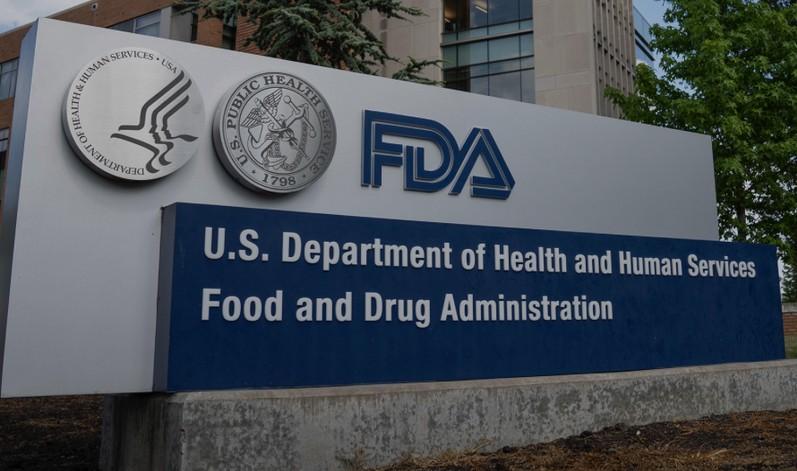
• Trump’s incoming regulators will have a challenge figuring out what to leave for the courts and what they should pursue via de-regulatory efforts – all while trying to anticipate what Congress might or might do legislatively via the Congressional Review Act and new legislation.




• President Trump announced the launch of Stargate, a enormous AI effort to make America dominant and counter China’s DeepSeek challenge.
• But the US is facing a serious electrical grid challenge already with the exponential growth of AI, Data Centers, and Crypto. There is not enough energy to power the projected growth in these sectors, but the transmission capabilities are antiqued and need to be replaced.
• But the grid is fragmented and has created “the interconnection queue” – a long line of projects waiting to get connected. How much? 1,5000 gigawatts, roughly 1/3 of all power currently produced in the US.
• Replacing existing copper wiring with carbon fiber wrapped in aluminum would allow a doubling of the amount of power to be pushed through the system.

Source: Bloomberg; New York Times, USEIA, Washington Post
• How will President Trump deal with this challenge? Will Congress have to step up?

Frank is the Founder and Managing Partner of Fulcrum Macro Advisors LLC. He has worked as a senior executive on Wall Street for over 30 years, most recently at Deutsch Bank. Prior to this, he held senior positions at Charles Schwab & Co., and Merrill Lynch where he was Chief of Staff and Global Head of Marketing.
At Deutsche Bank, Frank served as Global Coordinator for Government and Public Affairs. He was also the Bank’s first Chief Political Strategist, advising clients on geopolitical and domestic policy issues.
Prior to joining the financial services sector, Frank was Chief Spokesman and Senior Policy Advisor to the Chairman of the US Securities and Exchange Commission. Previous to this, Frank served at the US Department of Justice in the Office of Policy Development where he focused on international and national security issues. He began his career as a Writer for President Ronald Reagan, going on to serve as the Deputy Associate Director of the Office of Political Affairs. He remained at the White House to serve as a Writer for President G. H. Bush.

Francis j. Kelly
Direct: +1-202-744-5706
Email: fkelly@fulcrummacro.com www.fulcrummacro.com
He is also a Senior Advisor to The Scowcroft Group, a Washington DC global business advisory firm with an emphasis on emerging markets. He is also a Senior Associate in the Americas Program at the Center for Strategic and International Studies (CSIS). Frank additionally is a Lecturer at The Catholic University of America’s Busch School of Business where he teaches on Business Intelligence.
Frank is a member of the Council on Foreign Relations, the International Institute for Strategic Studies, the American Council on Germany and American Institute for Contemporary German Studies. He also serves on the Board of Directors of Codespa America and as Vice Chair of the Board of Directors of the Jerome Lejeune Foundation of America.
He resides outside Washington DC in Great Falls, Virginia with his wife, Maura, on their working farm, Open Door Farm.

How to Follow Us for Our Latest Updates:
Website: www.fulcrummacro.com (be sure to sign up for updates)

SubStack: https://franciskelly.substack.com
LinkedIn: https://www.linkedin.com/company/74303875/admin/feed/posts/
Twitter: Fulcrum Macro Advisorshttps://twitter.com/FulcrumMacro
Frank Kelly - https://twitter.com/FulcrumMacro
Instagram: https://www.instagram.com/fulcrummacro/

The opinions and forecasts expressed are those of Frank Kelly and may not come to pass.
DWS and Fulcrum Macro Advisor are not affiliated.
DWS does not intend to promote a particular outcome to the any elections due to take place. Readers should, of course, vote in the election as they personally see fit.
War, terrorism, sanctions, economic uncertainty, trade disputes, public health crises and related geopolitical events have led, and, in the future, may lead to significant disruptions in US and world economies and markets, which may lead to increased market volatility and may have significant adverse effects on the fund and its investments. All investments involve risk, including loss of principal.
The brand DWS represents DWS Group GmbH & Co. KGaA and any of its subsidiaries such as DWS Distributors, Inc., which offers investment products, or DWS Investment Management Americas, Inc. and RREEF America L.L.C., which offer advisory services.
DWS Distributors, Inc.
222 South Riverside Plaza Chicago, IL 60606-5808
www.dws.com service@dws.com
Tel (800) 621-1148 © 2025 DWS Group GmbH & Co. KGaA. All